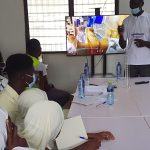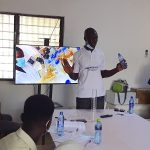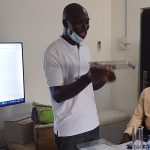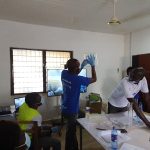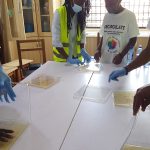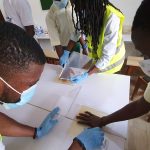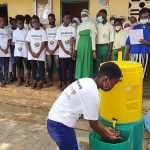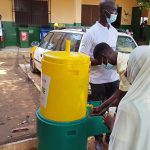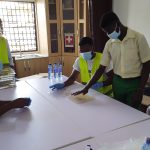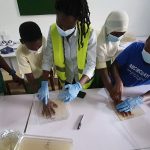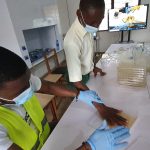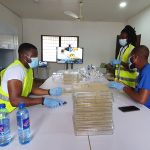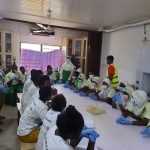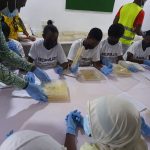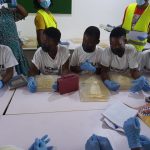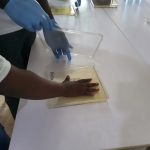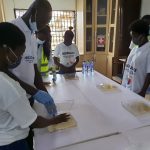Proper washing of hands is essential for everyone. This practice is the first line of defense against the spread of many diseases from the common cold to more serious infections, such as meningitis, bronchiolitis, the flu, hepatitis A, and many types of diarrhoea. The practice helps in getting get rid of dirt and contamination from microorganisms such as bacteria that may be on the hand. Transfer of these microorganisms into the body system are likely to cause the aforementioned diseases.
But how do you actually demonstrate the value of hand-washing to children and teenagers and the dangers lurking behind dirty hands?
The Healthy Hands project did so via a ‘show and tell’ approach, by creating a living lab demonstrator in a School in Greater Accra in Ghana.
The living lab demonstrator focused on two groups of students (total of 22 students) from Umar Bun Hatab Islamic School at Madina and community youth forerunners at Gbegbeyisee.
The Tell part: A visualisation exercise was carried out for all the students in the science laboratory at the School. This exercise involve a general talk on microbiology (bacteria) and the fact that they can be found in the environment including the room and on the hands. The presentation was followed by questions and answers.
The show and Tell part: Sterile culture plates containing autoclaved nutrient media agar were transported from the Microbiology laboratory of our local research partner to the school. Each student was allocated 2 plates containing the agar and were marked 1 and 2 with the student’s initials.
Each of the 22 students were asked to walk around and touch a few objects (door handles, desks and chairs). They then were instructed to place one full handprint on the agar in the Plate labelled A that also bears their initials immediately after the plates were opened. The lids were then replace and seal with tape
The 22 students were then split into three groups:
- Group B consisted of 11 students who washed their hands with soap and water before drying hands with paper towels and disposing towels in autoclave bag. They were then instructed to place their full handprint on the agar in the plate bearing their initials.
- Group C consisted of 11 students who were instructed to wash their hands with only water without soap and dry hands with paper towel before placing their full handprint on the agar in the culture plate bearing their initials.
- Group D consisted the same students in group B who washed their hands with only water and later washed their hands with soap before placing their full handprint on the agar in the plate bearing their initials.
All culture plates (both handprint and control plate) were transported to CSIR-Water Research Institute for incubation at a temperature of 37⁰C for 48 hours.
Results and observations
Bacteria load on plate A were observed to be more than the other plates (Plate B, C and D). The exercise was very educative and interactive. The students learnt so much from the demonstration and exercise. They also pledged to educate their follow peers, community member and household on the importance of washing hand often with water and soap.

